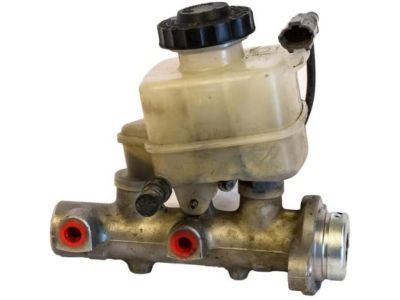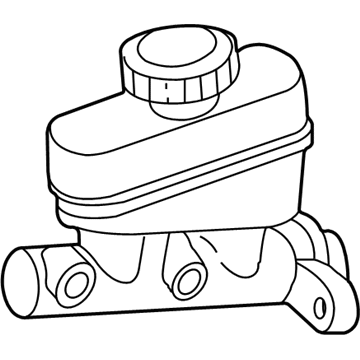FordParts
My Garage
My Account
Cart
OEM 2009 Ford Ranger Brake Master Cylinder
- Select Vehicle by Model
- Select Vehicle by VIN
Select Vehicle by Model
orMake
Model
Year
Select Vehicle by VIN
For the most accurate results, select vehicle by your VIN (Vehicle Identification Number).
1 Brake Master Cylinder found

2009 Ford Ranger Master Cylinder Part Number: 7L5Z-2140-AA
$160.30 MSRP: $254.55You Save: $94.25 (38%)Product Specifications- Other Name: Kit - Master Cylinder Repair; Brake Master Cylinder
- Replaced by: 7L5Z-2140-B
- Base No.: 2140
- Item Weight: 2.20 Pounds
- Item Dimensions: 8.9 x 6.5 x 12.0 inches
- Condition: New
- Fitment Type: Direct Replacement
- SKU: 7L5Z-2140-AA
- Warranty: This genuine part is guaranteed by Ford's factory warranty.
2009 Ford Ranger Brake Master Cylinder
If you're seeking quality and affordability, look no further than our extensive inventory of genuine 2009 Ford Ranger Brake Master Cylinder available at FordPartsDeal.com. You can confidently purchase our OEM 2009 Ford Ranger Brake Master Cylinder as they are supported by the manufacturer's warranty and our hassle-free return policy, alongside the benefit of our fast delivery service.
2009 Ford Ranger Brake Master Cylinder Parts Q&A
- Q: How to remove and replace the brake master cylinder on 2009 Ford Ranger?A: The first step of brake master cylinder removal starts with disconnecting the brake fluid level warning switch electric connection. Prior to master cylinder removal it is vital to reduce brake booster vacuum pressure so the O-ring will not enter the brake booster otherwise a new brake booster will need replacement when retrieval becomes impossible. You will relieve the brake booster vacuum by removing its check valve. The brake booster stud requires removal of its wiring retainer clip and then users must disconnect the brake tube fittings from their respective ports before plugging them and the brake master cylinder. Installation of brake fittings should reach a torque value of 18Nm (159 lb-in). First remove the two brake master cylinder nuts before taking out the brake master cylinder but reinstall both components to a torque specification of 18 Nm (159 lb-in). The procedure for master cylinder installation includes bleeder operation as the very final step. Use manufacturer-recommended brake fluid that remains clean and set aside painted or plastic areas when using such fluid since any spills need immediate cleansing with water.













